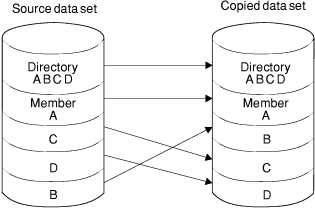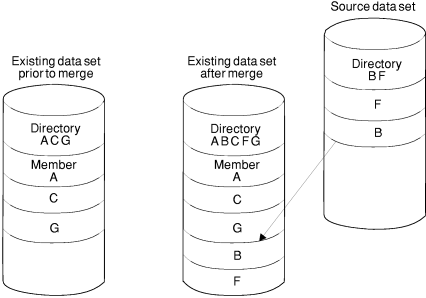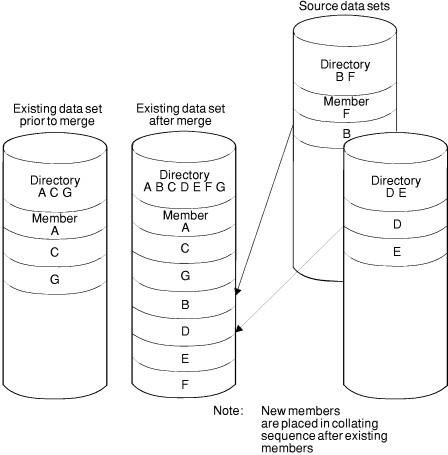 z/OS DFSMSdfp Utilities
z/OS DFSMSdfp Utilities
 z/OS DFSMSdfp Utilities
z/OS DFSMSdfp Utilities
|
Previous topic |
Next topic |
Contents |
Contact z/OS |
Library |
PDF
Partitioned Data Sets z/OS DFSMSdfp Utilities SC23-6864-00 |
||||||||||
|
Table 1 shows basic and optional move and copy operations for partitioned data sets.
Figure 1 shows a copied partitioned data set. IEHMOVE moves or copies partitioned members in the order in which they appear in the partitioned directory. That is, moved or copied members are placed in collating sequence on the receiving volume. The IEBCOPY utility program can be used to copy data sets whose members are not to be collated. Figure 1. Partitioned Data Set Before and After an IEHMOVE Copy Operation
 Members that are merged into an existing data set are placed, in collating sequence, after the last member in the existing data set. If the target data set contains a member with the same name as the data set to be moved, the member will not be moved or copied unless the REPLACE statement is coded. Figure 2 shows members from one data set merged into an existing data set. Members B and F are copied in collating sequence. Figure 2. Merging Two Data Sets Using IEHMOVE
 Figure 3 shows how members from two data sets are merged into an existing data set. Members from additional data sets can be merged in a like manner. Members F, B, D and E from the source data sets are copied in collating sequence. Figure 3. Merging Three Data Sets Using IEHMOVE
 Related reading: For more information, see IEBCOPY (Library Copy) Program. 


|
 Copyright IBM Corporation 1990, 2014 Copyright IBM Corporation 1990, 2014 |